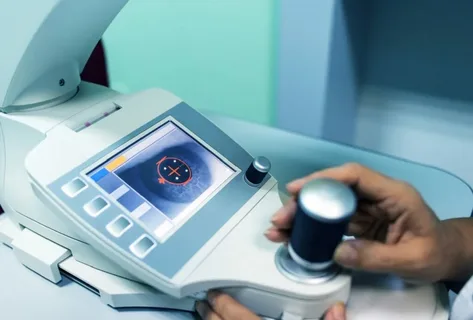Clear vision is not just about aesthetics or convenience—it can improve quality of life, boost confidence, and expand opportunities. Eye surgery options have evolved immensely over the years, offering a variety of treatments to meet different visual needs. For those in Austin exploring the benefits of eye surgery, including LASIK, this guide covers the essential information on various procedures, who they’re for, and how they can help you achieve better vision.
Page Contents
Understanding Vision Correction Surgery
Vision correction surgeries are designed to address common refractive errors: nearsightedness (myopia), farsightedness (hyperopia), astigmatism, and presbyopia. Each surgery type reshapes or alters parts of the eye—typically the cornea or lens—to correct these vision issues.

Why Consider Vision Surgery?
Eye surgery can be life-changing for many people. Here are a few reasons individuals consider it:
- Eliminating Dependency on Glasses or Contacts: For many, the convenience of clear vision without daily eyewear is invaluable.
- Cost Savings Over Time: While surgery is an investment, it can often reduce or eliminate the recurring cost of lenses and frames.
- Long-Lasting Results: Most vision correction surgeries offer years of clear vision, making them a sound investment for many.
Now, let’s explore the primary surgical options available today, especially for those considering Eye LASIK Austin.
LASIK: The Most Popular Vision Correction Surgery
What is LASIK?
Laser-Assisted In Situ Keratomileusis, commonly known as LASIK, is the most widely performed eye surgery to correct refractive errors. It reshapes the cornea, allowing light to focus more accurately on the retina, resulting in clearer vision.
How LASIK Works
The procedure begins with the creation of a thin flap on the cornea’s surface using a microkeratome blade or a femtosecond laser. This flap is lifted to reveal the corneal tissue underneath, which is then reshaped using an excimer laser. Once reshaped, the flap is repositioned, where it naturally adheres without stitches.
Benefits of LASIK
- Quick Recovery: Many patients notice clearer vision within 24 hours.
- Minimal Downtime: Most return to daily activities within a day or two.
- Lasting Results: LASIK is often effective for many years, making it a long-term vision solution.
Ideal Candidates for LASIK
LASIK is highly effective, but it’s not suitable for everyone. Ideal candidates are usually over 18, have stable vision, and have a suitable corneal thickness. Individuals with autoimmune conditions, thin corneas, or extreme refractive errors may not qualify.
PRK: Photorefractive Keratectomy
PRK, or Photorefractive Keratectomy, was the precursor to LASIK and is still used today, especially for those with thinner corneas.

How PRK Works
Instead of creating a corneal flap, PRK removes the outer layer of the cornea (the epithelium) entirely. The corneal tissue is then reshaped using an excimer laser. The epithelium eventually regenerates over the reshaped cornea.
Benefits of PRK
- Ideal for Thin Corneas: Since it doesn’t require a corneal flap, PRK is a good choice for those with thin or irregular corneas.
- Similar Results to LASIK: PRK provides similar outcomes in terms of vision clarity and improvement.
PRK Recovery and Considerations
PRK has a longer recovery time than LASIK, with full healing taking several weeks. Patients may experience more discomfort during the healing process, but the long-term results are comparable to LASIK.
SMILE: Small Incision Lenticule Extraction
SMILE, a newer and minimally invasive laser surgery, offers another option for vision correction.
How SMILE Works
In SMILE, the surgeon uses a femtosecond laser to create a small, lens-shaped piece of corneal tissue called a lenticule. This lenticule is then removed through a tiny incision, reshaping the cornea and improving vision.
Benefits of SMILE
- Minimally Invasive: SMILE requires a smaller incision than LASIK, making it gentler on the cornea.
- Faster Recovery: Many patients experience less post-operative dryness and a faster healing process.
Ideal Candidates for SMILE
SMILE is generally used for those with mild to moderate myopia (nearsightedness) and is less effective for farsightedness or astigmatism correction.
ICL: Implantable Collamer Lens
For patients with severe refractive errors or thin corneas that preclude them from LASIK, ICL is an option worth considering.
How ICL Works
ICL involves placing a small lens implant inside the eye, positioned between the iris and the natural lens. This implant works in conjunction with the natural eye lens to correct vision.

Benefits of ICL
- Reversible: Unlike LASIK, ICL is reversible, as the implanted lens can be removed if needed.
- No Corneal Alteration: ICL doesn’t involve reshaping the cornea, making it suitable for patients with thin or irregular corneas.
- Sharp Vision for High Refractive Errors: ICL can correct higher degrees of myopia than LASIK or SMILE.
Ideal Candidates for ICL
ICL is typically recommended for patients who aren’t ideal candidates for laser surgeries. However, it is a more invasive procedure than LASIK, with a longer recovery time.
RLE: Refractive Lens Exchange
Refractive Lens Exchange (RLE) is similar to cataract surgery, replacing the eye’s natural lens with an artificial intraocular lens (IOL). It’s commonly used for presbyopia correction but can also treat myopia and hyperopia.
How RLE Works
During RLE, the natural lens is removed and replaced with a customized IOL. The type of IOL depends on individual visual needs, with options including monofocal, multifocal, or toric lenses for astigmatism correction.
Benefits of RLE
- Addresses Presbyopia: RLE is effective for age-related vision issues, including presbyopia.
- Permanent Solution: RLE eliminates the need for cataract surgery later in life.
Ideal Candidates for RLE
RLE is generally suitable for older patients who are not candidates for LASIK, PRK, or SMILE. It’s a more invasive option than laser surgery but offers comprehensive vision correction.
LASIK in Austin: Finding the Right Surgeon
If you’re considering LASIK or any other eye surgery in Austin, selecting an experienced surgeon is crucial. The best surgeons provide thorough consultations, including advanced diagnostic testing, to determine the most suitable procedure.
What to Look for in a Surgeon:
- Certification and Experience: Opt for a board-certified ophthalmologist with a proven track record in vision correction surgeries.
- Range of Services: Clinics that offer a variety of surgeries, such as LASIK, PRK, SMILE, and ICL, are often better equipped to tailor treatments to individual needs.
- Patient-Centered Approach: The best surgeons prioritize patient education, clear communication, and aftercare support.
Preparing for Eye Surgery: What to Expect
Whether you choose LASIK or another procedure, preparation is essential. Here’s what to expect before surgery:
- Pre-Operative Exam: A thorough examination determines the best treatment for your vision and eye structure.
- Lifestyle Adjustments: Avoid contact lenses for a few weeks before the procedure, as lenses can alter the shape of the cornea.
- Medication Restrictions: Certain medications might need to be paused, depending on the surgeon’s recommendations.
Conclusion:
Choosing an eye surgery option is a significant decision, but for many, it opens the door to a life free of corrective eyewear. In Austin, patients benefit from experienced surgeons and cutting-edge technology that make achieving clear vision a safe, accessible goal. Whether you opt for LASIK, PRK, SMILE, ICL, or RLE, each procedure offers its unique benefits, providing a personalized path to better sight.
Ready for a Clearer World?
If you’re in Austin and considering vision correction surgery, consult with a qualified ophthalmologist to determine the best approach. With the right treatment, your path from cloudy to clear vision is within reach, providing you with the clarity and freedom that come with excellent sight.
